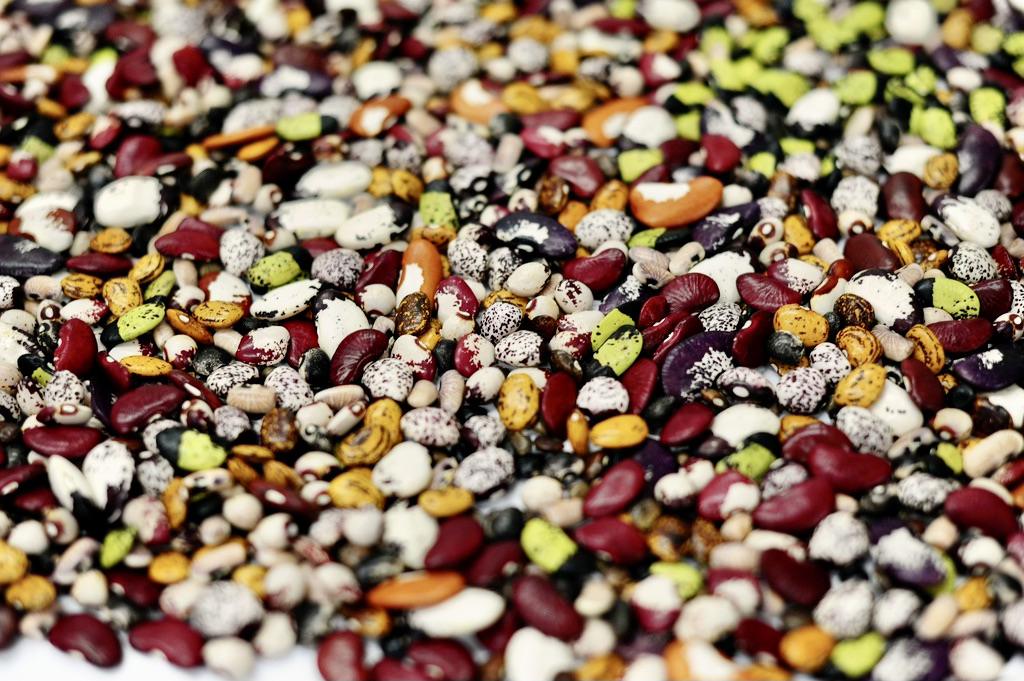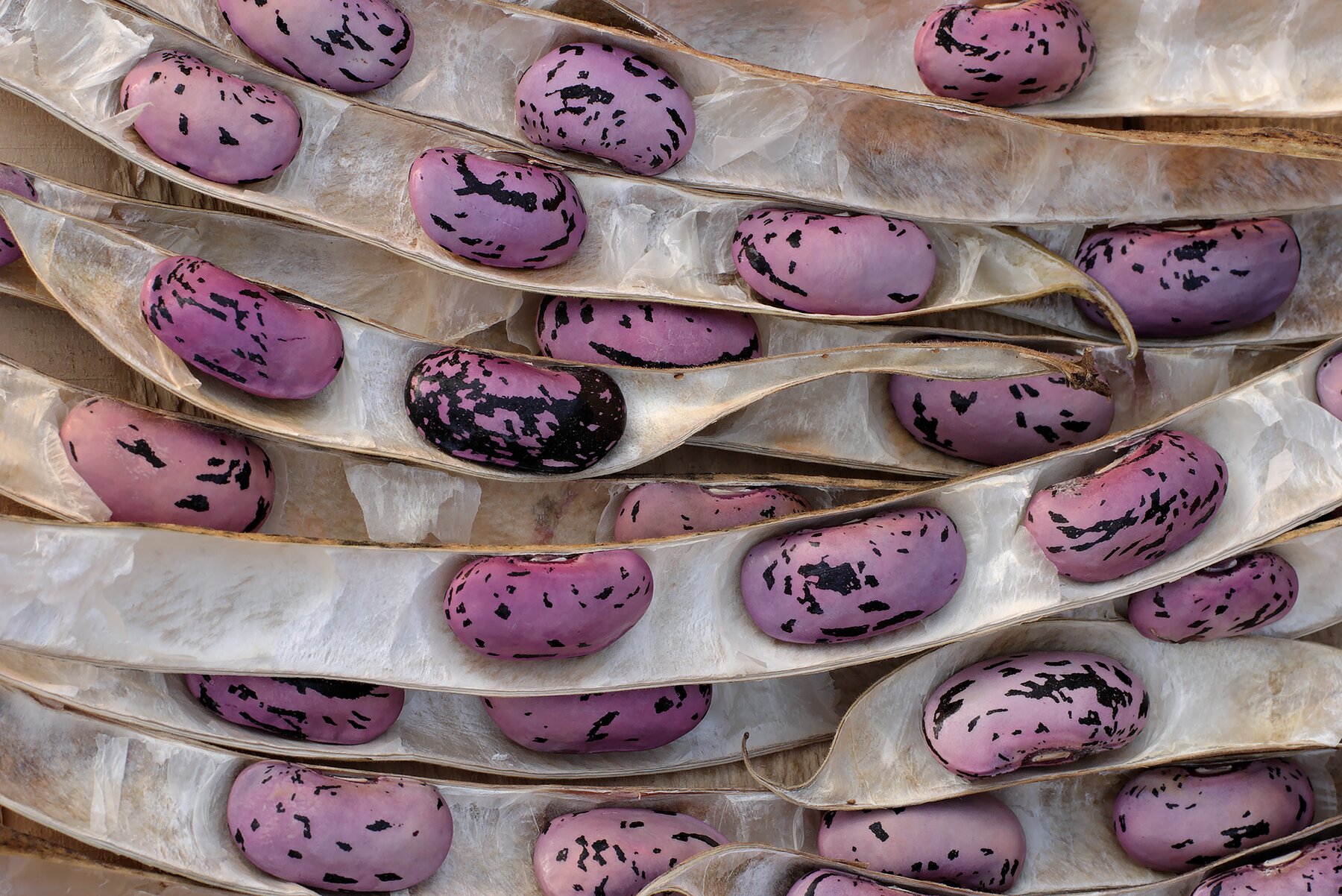Bean
Why bean?
The genus Phaseolus has a unique evolutionary and domestication history. It contains five domesticated species: P. vulgaris L. (common bean), P. coccineus L. (ayacote or scarlet runner bean), P. lunatus L. (Lima, butter or sieva bean), P. acutifolius A. Gray (tepary bean) and P. dumosus Macfady (acatalete, botil or year bean).
Phaseolus vulgaris is one of the most economically important legumes in the world. Beans are grown for their green leaves (often fed to livestock) and immature pods and seeds, but it is the dry seeds (which are nutritious and store well) that are the primary end product.
What we achieved
Collecting
- 102 samples of 12 bean wild relatives were collected from four countries: Costa Rica, Ecuador, El Salvador and Guatemala. This included P. microcarpus, a tiny wild relative of bean that grows on rocky outcrops, which was identified and collected for the first time in Costa Rica.
- A new species, P. angucianae Debouck & Araya, was also discovered in Costa Rica.
Pre-breeding and evaluation
- The bean pre-breeding project focused on using P. acutifolius to enrich variability for heat, drought and waterlogging tolerance and root rot resistance in the P. vulgaris gene pool for further use in bean improvement programs.
- Two wild P. acutifolius accessions tolerant to heat stress were identified and used in pre-breeding for heat tolerance.
- Numerous bean wild relatives that are tolerant of waterlogging and resistant to root rot were identified.
- P. vulgaris (cultivated) accessions tolerant to waterlogging at seedling stage identified.
- New populations have been developed from crosses between cultivated lines and waterlogging and heat tolerant bean wild relatives.
- Introgression lines (ILs) were used in evaluation trials in Colombia at International Center for Tropical Agriculture (CIAT), and in breeding programs at AGROSAVIA (Colombia), Zamorano (Honduras) and the IIAM (Mozambique).
- 47 pre-bred lines derived from P. acutifolius have been conserved in the CIAT genebank and available for sharing with global users through SMTA.

Project partners
Collecting
- Universidad de Costa Rica, San José, Costa Rica
- Instituto Nacional de Investigaciones Agropecuarias, Estación Experimental Santa Catalina, Quito, Ecuador
- Instituto de Ciencia y Tecnología Agrícolas, Villa Nueva, Guatemala
Pre-breeding and evaluation
Lead Institute: International Center for Tropical Agriculture (CIAT), Cali, Colombia
Partners:
- Corporación Colombiana de Investigación Agropecuaria, Mosquera, Colombia
- Zamorano, Francisco Morazán, Honduras
- Instituto de Investigação Agrária de Moçambique, Maputo, Mozambique
Bean key collections, materials and data
Bean collections
- The largest Phaseolus collection is conserved at CIAT, Cali, Colombia.
- The Genesys PGR database also includes information about bean accessions in genebanks worldwide
Pre-breeding materials
- 47 promising pre-bred lines are conserved in the CIAT bean genebank.
Data
- All data from the CWR bean pre-breeding and evaluation projects are available [from CIAT institutional data repository (https://dataverse.harvard.edu/dataverse/CIAT).
Bean stories
Crop Trust stories
- Find them if you can: Searching for wild relatives in Central America. https://stories.cwrdiversity.org/story/searching-for-crop-wild-relatives-in-central-america/.
-
The Bean That Could Withstand Hurricanes. https://www.croptrust.org/news-events/news/the-bean-that-could-withstand-hurricanes/. 13 July 2022.
-
A Worthy Bean. https://www.croptrust.org/news-events/news/a-worthy-bean/. 1 August 2017.
-
Beans, Crops in Color. https://www.croptrust.org/work/projects/outreach-projects/crops-in-color/beans/.
Partner stories
- A wild bean’s genes may help a key crop thrive on a hotter Earth. https://blog.ciat.cgiar.org/a-wild-beans-genes-may-help-a-key-crop-thrive-on-a-hotter-earth/. 23 January 2020.
- Heat-tolerant wild beans tapped to breed commercial beans for hotter climates. https://blog.ciat.cgiar.org/heat-tolerant-wild-beans-tapped-to-breed-commercial-beans-for-hotter-climates/. 9 August 2019.
Relevant publications
- Rojas, Fredy Alexander Monserrate. 2012. Modelamiento con el apoyo de Sistemas de Información Geográfico de los efectos de cambio climático sobre parientes silvestres de cultivos prioritarios para la alimentación y la agricultura: Estudio de caso fríjol común. Thesis, Masters in Geographic Information Systems. Universidad San Francisco de Quito, Peru.
- Porch, T.G., Beaver, J.S., Debouck, D.G., Jackson, S.A., Kelly, J.D., Dempewolf, H.. 2013. Use of wild relatives and closely related species to adapt common bean to climate change. Agronomy 3(2): 433−461.
- Debouck, D.G., Araya-Villalobos, R., Chaves-Barrantes, N. 2016. Confirmación de la presencia de Phaseolus microcarpus Mart. en Costa Rica. Poster. 61 Reunion Anual del PCCMCA, San José, Costa Rica.
- Kumar, S., Sharma, S., Kumar, J., Maalouf, F., Hamwieh, A., Gaur, P., Sarker, A. 2020. Pre-breeding efforts for widening the genetic base of cool-season food legumes. In: International Conference on Pulses the Climate Smart Crops: Challenges and Opportunities. pp. 32–39.
- Pratap, Aditya, Das, Arpita, Kumar, Shiv, Gupta, Sanjeev. 2021. Current perspectives on introgression breeding in food legumes. Frontiers in Plant Science 11: 2118. https://doi.org/10.3389/fpls.2020.589189.

